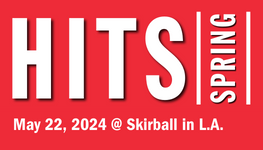M+E Connections

M&E Journal: The Power of Knowledge Graphs for Content Discovery
Story Highlights
Searching for relevant content in any format — text, images, video — is only as successful as the way the content has been structured, organized, and described. Similarly, the serendipitous discovery of content through navigation or recommendation is also based on manually or automatically creating links between content.
These links are based on metadata: the user-friendly tags or descriptions of structured or unstructured content.
The main challenge for users discovering content is poor or missing metadata.
The best way to ensure metadata is applied consistently and accurately is to centrally manage these metadata values in the form of controlled vocabularies. These vocabularies may be flat lists of terms, hierarchical taxonomies, or domain-specific ontologies modeling the concepts in the domain, and the relationships linking them together.
 WHAT IS A KNOWLEDGE GRAPH?
WHAT IS A KNOWLEDGE GRAPH?
Knowledge graphs are interlinked concepts described in a formal structure that can be used by both auto- mated systems and humans. The power of knowledge graphs is the use of relationships between entities.
In a graph, metadata labels describing concepts (like “spy movies”) or specific entities (whether real, like “Daniel Craig,” or imaginary, like “James Bond”) are not just labels applied to content; they are interlinked objects in a system with attributes, properties, and even links to external data sources.
They also have well-defined relationships to one another, so we can model information independently of any specific piece of content.
For example, we might describe the relationship between an actor and a film as:
Daniel Craig has film No Time to Die
No Time to Die has actor Daniel Craig
We can use and expand this model to create a knowledge graph about James Bond films, actors, characters, and other information. This may be offered as a visual user interface for browsing or used behind the scenes to improve search.
In the world of the Semantic Web — an extension of today’s World Wide Web, intended to make online content metadata machine-readable — resources are structured based on a set of standards allowing for the reuse and exchange of information. One of the principles of the Semantic Web is connecting objects using defined relationships.
Objects can be data, content, or an aggregation of content (such as blocks of text, images, and links found on a web page). Establishing meaningful relationships between objects creates a structure which is understandable both to humans and automated systems.
Relationships are the real power of a knowledge graph.
The two metadata values “Daniel Craig” and “No Time to Die” are controlled values which are easily understood. Likewise, the clearly named relationships between them “has film” and “has actor” establish how the metadata are connected.
A knowledge graph connects more subjects and objects by defining their names and the relationships between them.
It is possible to apply semantic data to content at the component digital asset level. For example, an image tagged with “Daniel Craig” and “James Bond” can be linked to text content which is also tagged with the same metadata values, allowing content to be mixed, matched, and personalized.
 Combining content with metadata concepts in a graph also enables rich search experiences, now familiar from Google’s Knowledge Graph search results in a feature-rich and navigable graphical interface, in which information about a topic is available when searching for content related to the topic.
Combining content with metadata concepts in a graph also enables rich search experiences, now familiar from Google’s Knowledge Graph search results in a feature-rich and navigable graphical interface, in which information about a topic is available when searching for content related to the topic.
The enabling technologies have improved, making knowledge graphs more accessible and easier to build. What are some of the ways they are being used?
Content Management
Knowledge graphs are particularly effective at aligning content silos by using a common metadata structure.
The underlying values in a knowledge graph can be explicitly defined across different data sources so we can clearly identify, for example, the difference between an “apple” and the company “Apple.” So, not only are structured and unstructured data and content bridged, they’re also semantically disambiguated.
Internal Knowledge Management
Internally, knowledge graphs are used to connect content and people as part of a knowledge management ecosystem. Using a single search interface, users can search for subject matter experts, the content they produce, and how they are connected. Social network traversal, such as that used by companies like Facebook and LinkedIn, can reveal how employees are connected and what common interests or projects they are pursuing.
Similarly, the content they produce is discoverable based on relevancy, popularity, or other important criteria.
Personalization and Smart Content
A key use case for marketers is personalizing and delivering content recommendations. In the vast sea of information, how do marketers connect relevant content to consumers? One of the challenges to personalized content delivery is knowing the target user: who they are and what they are interested in.
Without asking users to self-identify, knowledge graphs help facilitate the delivery of relevant information by using metadata associated with content and tracking user behavior.
Leveraging metadata, along with basic user information such as browser language or location, can facilitate delivering localized content that is also culturally and legally appropriate.
Smart content delivery is metadata-driven. Content can be tagged with metadata defining both the nature of the content and the delivery target: location, demo- graphics, language, or any other defining factors which resonates with the consumer. Imagine discovering that a user’s online behavior strongly indicates this person is part of Generation X, and, therefore, content tagged with “Generation X” as a generational demographic is also connected to other content, such as a video with a tag of “80s music.”
The content is assembled on the fly for personalized delivery, pushing the buttons of nostalgia and positive feelings in the consumer.
The metadata, tagged content, and relationships form an interconnected graph which can be connected and delivered.
At the simplest level, standardized metadata links content. One of the most powerful features of knowledge graphs is the explicit relationships between the metadata, allowing users to discover similar or related items of interest.
Knowledge Graph Resources
The technologies supporting the construction and implementation of knowledge graphs may seem a bit daunting to those first making their way into the space. Successful projects require employing resources familiar with Semantic Web standards and best practices.
However, software tools and other technologies, as well as organizations that possess the required expertise, are now widely available.
 Developing an organization’s knowledge graph requires domain expertise and experience for effective information modeling and metadata development. Fortunately, there are many freely available data sets to help jumpstart knowledge graph projects.
Developing an organization’s knowledge graph requires domain expertise and experience for effective information modeling and metadata development. Fortunately, there are many freely available data sets to help jumpstart knowledge graph projects.
While many organizations will require domain-specific or proprietary concepts to be included, using pre-defined properties, relationships, and concepts can significantly cut down the amount of initial work.
For example, DBpedia is an open, Semantic Web-compliant data set available for use as a starting point.
Information from DBpedia, or similar sources, can be captured and stored as part of a knowledge graph and exposed in a user interface to provide a rich user experience to accompany search results and guide the user to related content.
WHY INVEST IN KNOWLEDGE GRAPHS?
Realizing the power of knowledge graphs requires an investment in research, development, and maintenance. Knowledge graphs must be updated to keep up with new content and organizational priorities.
Adopting new technologies, integrating existing systems, and applying consistent, high-quality metadata to large volumes of content takes time and resources. So, what makes it worth the effort?
Knowledge graphs can improve user experiences, remove barriers to internal and external users locating relevant content, and deliver personalization.
The time saved and potential revenue earned once the initial up-front work is performed is a significant return on investment.
** By Bob Kasenchak, Senior Manager, Client Solutions, and Ahren E. Lehnert, Senior Manager, Text Analytics Solutions, Synaptica **
=============================================
Click here to download the complete .PDF version of this article
Click here to download the entire Winter 2021 M&E Journal









